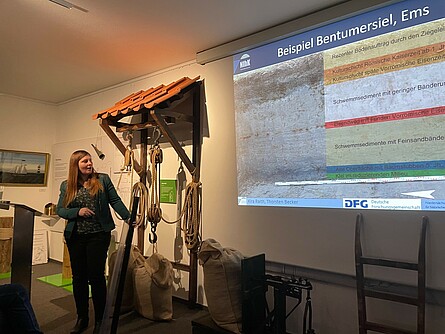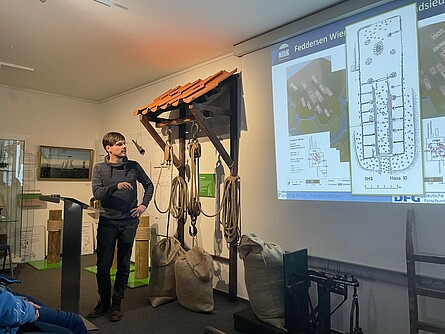

New investigations on beach ridges and dwelling mounds from ages past
Since at least the Roman Iron Age ca. 2000 years ago, the coastal fringe of Butjadingen has been densely populated. To this day, man-made dwelling mounds – so called terps – bear witness to these times and life by the sea. People, however, did not settle just anywhere. Evidence suggests that they chose slightly elevated ground comprising of coastal sediments deposited by the sea, which over time had grown to form natural beach ridges. In the northern part of Butjadingen, traces of several such ridges have been preserved and are still visible in the topography today.
On the evening of February 14th, Kira Raith M.Sc., Thorsten Becker M.A., Dr. Friederike Bungenstock and Dr. Annette Siegmüller from the NIhK introduced new investigations on dwelling mounds and beach ridges in the area sponsored by the Deutsche Forschungsgemeinschaft to a general audience at the Nationalpark-Haus Museum Fedderwardersiel. 75 residents, local farmers and visitors attended the almost two-hour event and were informed in detail about the project’s current research, initial results and upcoming fieldwork. The overall aim of the project is to reconstruct the chronology of the terps’ and beach ridges’ formation as well as to investigate relations of settlement patterns and the ever-changing environment in the region’s early history. The project’s team was excited about the great public interest and thanked Dr. Annika Seyfferth and her colleagues from the museum for organizing the event.
